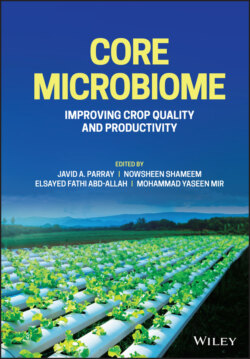Читать книгу Core Microbiome - Группа авторов - Страница 30
2.3.2.4 Induced Systemic Resistance
ОглавлениеThe ISR and SAR primes plant defense against pathogenic microbes and herbivore insects by protecting plants from future attacks. Plants exhibit resistance by several molecular defense mechanisms such as ethylene/jasmonic/salicylic acid (ET/JA/SA) signaling pathway, callose deposition, regulation of polyamines uptake, accumulation of phytoalexins, producing reactive oxygen species, and gene expression that codes for pathogenesis-related (PR) proteins [46,69]. Defense-related genes were expressed in Arabidopsis, which simultaneously activated both defense pathways triggered by Bacillus cereus AR156 [70]. This increased biomass of plants and a simultaneous reduction in pathogen density and disease severity was observed. Moreover, an up-regulation of both of the defense pathways in Arabidopsis thaliana was observed by Conn et al. [71]. Inoculation of Actinobacteria protected against infection from both fungus Fusarium oxysporum and bacteria Erwinia carotovora. However, the defense pathways primed were different for both types of pathogens. The resistance to F. oxysporum involved the SA pathway, while the jasmonic acid pathway provided resistance to E. carotovora. Thus, the bacteria used two different ways, which helped in conferring resistance to two different pathogens [71].
